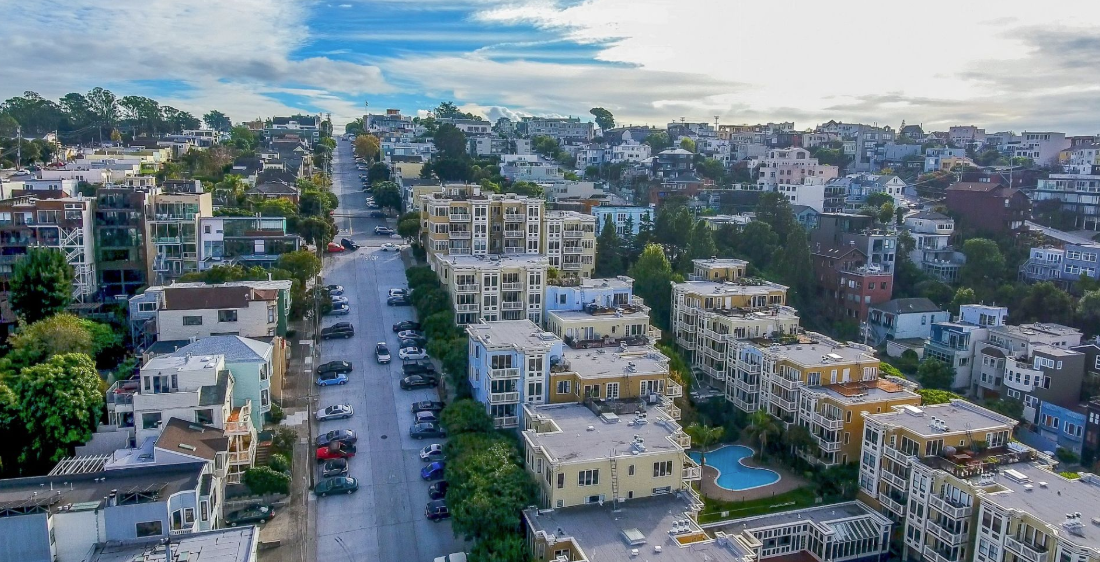The year has just started, but there are already several pending pieces of housing legislation and other initiatives to watch in 2019, both locally (San Francisco and Bay Area overall) and statewide. The 2019-2020 legislative session opened in Sacramento just last month and 26 housing bills have already been introduced. This article summarizes a few key housing undertakings to watch closely in 2019.
Senator Wiener Starts the Legislative Session with SB 50 (version 2.0 for SB 827)
Among the housing bills introduced in December is Senator Scott Wiener’s SB 50, which is essentially a revised version of the failed SB 827 from the 2018-2019 legislative session. The bill proposes to streamline entitlement processes for certain residential projects that are considered either “Transit-Rich” or “Jobs-Rich” projects due to their proximity to transit (0.5 mile radius from a transit stop along a high-quality bus corridor) or jobs (certain areas identified by the Dept. of Housing and Community Development and the Office of Planning and Research). Projects that qualify would be entitled to receive an “equitable communities incentive,” which can consist of waivers from maximum density controls and parking requirements that exceed 0.5 spaces per unit, and waivers from height and FAR limits that are less than 45 feet and 2.5 FAR, or 55 feet and 3.25 FAR, depending on whether the project is located within ½ or ¼ mile distance from a major transit stop.
The Return of Redevelopment Agencies (version 2.0 for AB3037)
Among the first bills introduced for the current legislative year, Assembly Member David Chiu introduced AB 11, the Community Redevelopment Law of 2019. A similar bill was introduced by him last year as AB 3037, however, that bill did not proceed to adoption. The elimination of redevelopment agencies in 2012 was a significant hit (and loss of funding mechanism) to California cities and counties. AB 11 would allow cities and counties to form new agencies (referred to as affordable housing and infrastructure agencies) to capture tax increment within certain agency boundaries for the purpose of providing funding and development for certain housing and infrastructure projects, including the issuance of bonds. If adopted, AB 11 would create redevelopment agencies similar in purpose and powers to the former redevelopment agencies that existed prior to 2012.
CASA and Bay Area’s Housing Crisis
CASA, or the Committee to House the Bay Area, is an initiative by MTC (Metropolitan Transportation Commission) and ABAG (Association of Bay Area Governments) that has been proceeding for the last 1.5 years after the release of the Plan Bay Area 2040 in Summer 2017. CASA is an ambitious effort that created a blue-ribbon task force that brought together a varied and diverse group of Bay Area leaders and stakeholders, including developers, elected officials, housing advocates, labor representatives, civic leaders, and others, in an effort to fix the housing crisis. CASA’s objective is no small task, however, the stakes regarding the future of the Bay Area are high as well.
CASA is co-chaired by Fred Blackwell (San Francisco Housing Foundation), Leslye Corsiglia (Silicon Valley @ Home), and Michael Covarrubias (TMG Partners). In December, CASA came out with “CASA Compact,” a 15-year policy reform document proposing recommendations to alleviate Bay Area’s housing crisis. Implementation of CASA Compact would require participation from all stakeholders, including legislation from Sacramento, regional ballot measures, and action by local governments, particularly in the next 3-5 years. CASA Compact includes 10 distinct Elements, covering tenant protections, housing inclusion and capacity, approval processes and timelines, and funding and coordination. The document also provides several action items, including without limitation, the re-establishment of redevelopment agencies (see AB 11 above), Prop. 13 amendments reallocating the distribution of tax revenues, funding to reduce and prevent homelessness, stabilization of the construction labor force, and legislative changes to the voter thresholds required for passage of bond measures for affordable housing investments and housing production (55% vs. 2/3rds). The collaboration between different stakeholders that make up CASA and the issuance of CASA Compact is quite impressive, and the implementation and realization of CASA is high on the list of 2019 efforts to follow.
Authored by Reuben, Junius & Rose, LLP Partner, Tuija Catalano
The issues discussed in this update are not intended to be legal advice and no attorney-client relationship is established with the recipient. Readers should consult with legal counsel before relying on any of the information contained herein. Reuben, Junius & Rose, LLP is a full-service real estate law firm. We specialize in land use, development, and entitlement law. We also provide a wide range of transactional services, including leasing, acquisitions and sales, formation of limited liability companies and other entities, lending/workout assistance, subdivision, and condominium work.











